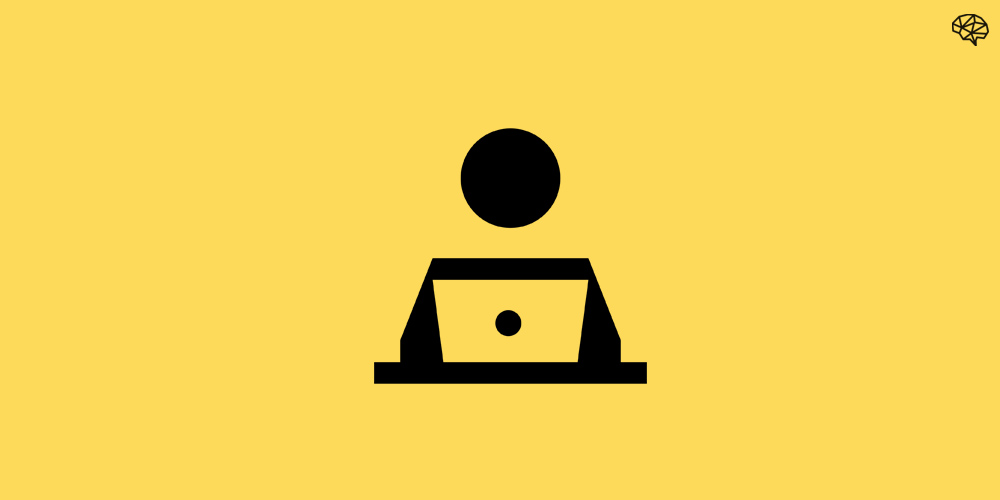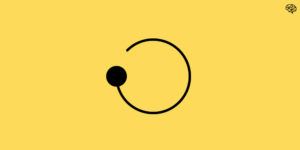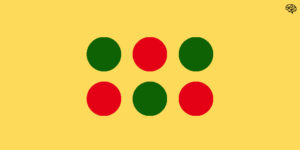We’ve all heard about the importance of deep work.
If you’ve structured your week the right way and time blocked effectively, then you’ve solved the first part of the puzzle – you’ve carved out time for your most important work and most challenging projects. But this is just the beginning. Now comes the hard part – putting this time to use in the most effective and productive manner so you can move the needle on your most important work.
If you’ve tried putting deep work into practice, you’ve likely realized it’s much easier said than done. Focusing for a sustained period of time on one thing is really hard. Working on your hardest, most difficult work isn’t fun, either. We’re constantly getting distracted.. Our attention wanes and falters. We often get sucked into the business of the day and pulled away from the important work at hand.
If you want to make progress on your most important work, you need to make the most of your precious deep work sessions. Here are 5 ways to improve focus and get the most out of your deep work sessions:
- Schedule them at the right time and duration
- Come prepared with your important work list
- Warm up like an athlete
- Optimize your environment for deep work
- Minimize key distractions
Let’s dig into each.
1 – Schedule your deep work sessions at the right time, for the right duration
If you’re scheduling your deep work sessions at the end of the day when your energy levels are mostly depleted, you’re going to be fighting an uphill battle.
If you want to set yourself up for success, it’s important to schedule your deep work sessions strategically. The two things to consider are your energy levels and the type of work you’re doing.
Your energy levels will fluctuate throughout the day. If you were to rate your energy levels from 1-10 every hour of the day, you’d find there are periods where it’s high (7-10) and periods where it’s low (1-6). For most of us, our energy levels peak within the first eight hours of our day so it’s ideal to carve out time in the early to late morning for work that requires sustained complex thinking.
The other thing you want to think about is the type of work you’re doing. Some periods throughout the day (like mornings) have been found to be more conducive to analytical work while afternoons are better for creative work. Listen to this great podcast episode from Huberman Labs if you want to nerd out on the details of why that is.
Finally, the duration of your focus block is important. You want to have a sufficient amount of time to work on the complex problems in front of you. If it’s too short, you’ll feel rushed and find it hard to work past the surface level of the problem. Too long and Parkinson’s law will take effect, allowing procrastination to take hold.
I’ve found the ideal duration for a deep work session is 90 minutes with an option for a break in between. Others like to use the Pomodoro technique where they break up their work session in spurts of 25 minutes of work, 5 minutes of rest. I’d say give yourself at least 90 minutes to work with and then play around with different combinations of working styles until you find one that works.
2 – Come prepared for deep work with your important work list
While some people like to start their deep work session with a blank slate, I’ve personally found you can get much more out of your focus block by coming prepared with a list of things you want to accomplish.
The key is to have your list ready and sorted.
When you sit down for a deep work session, have a short list of important work sorted by impact. You can either do this the night before or just before your focus block begins. But when you sit down to work, you know what you’re working on.
Ideally, you want to bring 2-5 high leverage tasks or problems you want to work through.
While it doesn’t always have to be the case, it helps to keep the list short. It helps to limit your WIP (work in progress). For one, it’s really difficult to estimate how long complex tasks will take so you want to leave sufficient buffer room. I find when I try to cram with deep work session with a dozen items I find myself rushing through each task which ultimately impacts the quality of the work that I do.
When you limit yourself to 2-5 items, you reduce the amount of brain power that you’re resorting to the remaining items on your list. You’re focusing only on the tasks at hand.
3 – Warm up like an athlete
Professional athletes don’t show up at the gym 5 minutes before the big game and immediately start playing.
Every athlete has a warm up routine they follow religiously to get themselves prepared for the main event. One of my favorite basketball players of all time was the late Kobe Bryant, who inspired many of today’s great players to put the work in pre game. His routine wasn’t as fancy as some of the players you see today, but it was effective.
While you may not be a professional athlete, you should treat your deep work session as the main event.
It’s really hard to sit down in the morning and immediately start working on a complex problem or project. Your mind requires some pre-game preparation to get the circuitry firing. That’s why I like to start with some easy admin tasks to build some momentum.
Like an athlete, you want to have a short routine that you can run through to get yourself warmed up for the big game. Set your timer for 10-15 minutes and have a small handful of easy tasks – like organizing meeting notes, responding to quick emails, etc. – that you can do to ease into your session. Or spend a few minutes playing a mentally stimulating game like Wordle to get your mental circuitry moving.
You have to think and operate like an athlete.
4 – Optimize your environment for deep work
If you want to maximize focus during your deep work sessions, you need to maximize your level of alertness.
As you’ll see, there are various ways to do this with light, sound, and other tools. But from my experience, if we’re talking about optimizing for alertness, none of these replace a good night of sleep, regular exercise, and healthy eating (a well-timed cup of coffee helps too). The following are small levers you can experiment with to see what impact they have on your ability to focus.
Side note – You’ll notice I site Andrew Huberman’s podcast for many of these ideas. He’s a neuroscientist and associate professor in the Department of Neurobiology at the Stanford University School of Medicine and has a fantastic podcast. If this granular level of optimization interests you, I’d suggest listening to the full episode. It’s long, but insightful.
Here are some things to consider if you want to optimize your environment for deep work:
Maximize lighting
Exposure to light – particularly in the early part of the day (within 8 hours of waking) – can have a strong impact on your level of alertness.
Depending on when you wake up, natural (and direct) sunlight is going to be the best stimulus for waking up your mind and body. If possible, try to get morning sunlight in your eyes within 30-60 minutes of waking.
Since many of us rise well before the sun, artificial light is your next best option.
In this case, try to light your environment as brightly as you can with both overhead lights and front facing lights (like desk lamps or ring lights). Bright lights, in particular bright overhead lights, help facilitate focus and the release of neurotransmitters like dopamine, norepinephrine and (healthy amounts of) cortisol – all the things that drive alertness.
If you’re interested in learning more about the impacts of light, watch this segment of Huberman’s video.
Look forward, not down
To maximize alertness, you want your screen to be at eye level or slightly above.
According to Huberman, when we are looking down towards the ground or anywhere below our nose, we activate areas of the brain associated with calm and sleepiness, neither of which are great for deep work. When you look down, you’re less alert.
The opposite is also true – when we look up, we trigger areas of the brain associated with alertness.
Many of us work directly on our laptops which means we’re constantly looking down. If this sounds like you, consider propping your laptop up with a tool like Roost and get yourself an external mouse and keyboard. Or just prop up the laptop on a pile of books. Do the same with an external monitor if it’s not currently sitting at eye level.
Bonus: this will also improve your posture.
Be mindful of audio
There are some interesting studies on the effects of sound and noise on your cognition and alertness. Huberman talks about some of them here.
While sound is very preferential, there are certain sounds that have shown to be detrimental to cognitive performance. For example, Huberman sites one study showing how environmental background noise – mostly loud ongoing humming of air conditioners or ventilators – can increase mental fatigue and be detrimental to cognitive performance.
So avoid working in loud, fan filled environments if you can (or get ear plugs).
What about sounds that improve cognitive performance? There’s some data out there on the impact of white/brown/pink noise and you’ll find plenty of options on YouTube and Spotify to experiment with. If you’re interested in things like binaural beats, check out this segment of the Huberman podcast episode.
Personally, I jump between complete silence and light instrumentals for deep focus work and (lately) 70s music for more creative work.
Use the cathedral effect
I haven’t experimented with this one myself, but I thought it was worth sharing.
In one segment, Huberman talks about this concept called The Cathedral Effect and references an interesting study that talks about the influence of ceiling height on cognitive processing. In short, the study concluded that working in high ceiling environments primes your brain for more abstract and creative type of thinking while working in low ceiling environments is better suited for analytic & detail-oriented work.
So how can you use this tidbit of information?
If you’re doing very analytical, detail oriented work (think spreadsheets) during your deep work session, find a low ceiling environment to do it in. If you don’t have that option, you can get a similar result by restricting the height of your visual field (by putting on a hoodie and a baseball cap, for example). The lower the ceiling – or essentially the lower your visual environment – the more primed you’ll be for analytical work.
On the flip side, if you’re doing more abstract creative work, find a high ceiling environment or at least open up your visual environment.
5 – Minimize distractions, strategically
Your environment is filled with all sorts of cues that can trigger positive and negative behaviors. If you’re sitting down for a deep work session but you’re surrounded by cues, you’ll be fighting an uphill battle against distractions.
To have an effective and productive deep work session, you have to protect against distractions. And you need to be intentional about it. Distractions are everywhere and can easily derail even the most well-intentioned deep work session.
Here are a two places to get you started:
If you want to improve your focus and get the most out of your deep work sessions, find and implement a system to protect you from distractions.
Final thoughts
It’s hard enough finding time for deep work, but once you do have it carved out in your calendar it’s important to take advantage of it.
Be mindful of how your energy levels naturally fluctuate throughout the day and look to schedule your deep work sessions during your peaks, not valleys. Come prepared with your most important work at hand and warm up before the main event. Finally, optimize your environment and minimize your distractions to give yourself the best chance of success.
This is how you improve your focus and get the most out of your deep work sessions.
Hope you found it helpful.
✌


